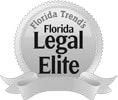PPP Loans – Forgiven or Imprisoned? Good news for those PPP Borrowers under $2 million!
Under the CARES Act, several types of loans were made available to business owners. The loan program which has generated the greatest discussion (and controversy) is known as the Paycheck Protection Program (“PPP”). The PPP loan was designed to aid businesses which might be imperiled by the Covid-19 Coronavirus. With massive unemployment looming (and in fact now at nearly 15%), the PPP program provided eligible employers with “forgivable” loans to be used primarily for employee salaries (not to exceed $100,000 on an annualized basis) to both keep businesses running and try to offset the impending overwhelming claimants filing for unemployment benefits. Generally speaking, a business could obtain a loan equal to 2.5 times its average monthly payroll. The loan would be forgiven in its entirety if during the 8 week period beginning on the date that the loan proceeds were actually received, if at least 75% of the loan proceeds were used on compensation (again, capped at $15,384 for that 8 week period for any employee) and the remaining funds were used (generally) for qualified mortgage payments, rent and utilities (see more detailed discussion at the end of this article). To the extent that the loan proceeds were not used in accordance with the preceding sentence, the loan would have to be repaid. If the loan was forgiven, there would be no taxable event to the borrower, and it appears, that most likely, the business would also get the deduction for its rent, utilities and compensation paid with the borrowed PPP funds.
Under the CARES act, in order to receive a PPP loan, borrowers had to make several certifications to the banks, including “that the uncertainty of current economic conditions makes necessary the loan request to support the ongoing operations of the eligible recipient” (the “Certification”). At first blush, this certification seemed simple since the uncertainty regarding the Pandemic caused almost every employer to consider massive reductions in staff and compensation; in fact, many employers have participated in massive payroll cuts, layoffs, furloughs and terminations. However, because a number of major corporations applied (and received the PPP loan) despite having adequate access to major capital reserves and other funds, like almost everything, passionate reactions ensued. Several senators wanted to equate the Certification to the ability to obtain any other funds whether through loan, capital reserve, etc., while others wanted to test the Certification against actual revenue. Obviously, neither of these approaches made sense because Borrowers generally had no knowledge of how their business would prospectively perform or whether there would be any ability, or whether it even would be wise, to try to further leverage their imperiled business. And, of course, many would argue that the PPP was really made available, in large part, to assist small business owners from having to lay off employees and to keep as many employees off the unemployment rolls as possible.
The SBA has put out a series of Frequently Asked Questions (FAQ) on its’ website. FAQs 31 and 37 caused incredible controversy when it became clear that a failure to meet the Certification requirements (whatever they might ultimately be) could cause the business owner to be fined up to $1,000,000 and spend up to 30 years in prison! In fact, the SBA provided amnesty to business owners to return their PPP funds by May 7, 2020, if they felt they could not meet the undefined and wildly debatable Certification requirement. The May 7 deadline was later extended to May 14 with a promise that the SBA would provide further guidance before May 14th.
On May 13, the SBA added FAQ 46 to directly address the panic that was besieging PPP borrowers. FAQ 46 clarifies that “any borrower that, together with affiliates, received PPP loans with an original principal amount of less than $2 million will be deemed to have made the required certification concerning the necessity of the loan request in good faith”. The SBA states that borrowers of less than $2 million are less likely to have had access to adequate sources of liquidity than larger borrowers, and given the large number of PPP loans would allow the SBA to be more thorough, given its limited audit resources to concentrate on borrowers with loans greater than $2 million.
For most borrowers, FAQ 46 is a huge relief. However, it is important to remember that if you are PPP borrower that you will still have apply for forgiveness of your PPP Loan. Your bank will review your forgiveness application (and same will be subject to SBA review) to confirm that your PPP loan was used for payroll (at least 75% of your PPP proceeds), costs related to the continuation of group health care benefits during periods of paid sick, medical, or family leave, and insurance premiums; mortgage interest payments (but not for mortgage prepayments or principal payments); rent payments, utility payments, interest payments on any other debt obligations incurred before February 15, 2020; and refinancing as SBA Economic Injury Disaster Loan made between January 31, 2020 and April 3, 2020 (with some specific rules relating to same).
If you should have any questions regarding the PPP program, please give us a call.







